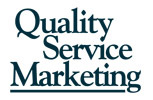A trend I’ve noticed from my internal marketing workshops is attendees’ increased interest in engaging their employees as brand advocates/ambassadors/champions/evangelists or whatever preferred term is used to describe highly engaged employees who positively represent the company brand. More and more companies are moving from lip-service to genuinely recognizing their employees’ role in competitive differentiation. These organizations have come to understand that innovation isn’t sustainable. While today’s new products & services can become tomorrow’s commodities, the one thing your competitors cannot copy is your employees’ relationship with your customers.
I’m thrilled that more companies get the concept that their brand “walks on two feet.” At the same time, I’m concerned because developing and sustaining such brand champions cannot be a superficial endeavor. The process starts with corporate and nonprofit leaders answering these critical questions:
- WHY do we want and/or need brand champions?
- WHAT DO WE EXPECT to happen as a result of engaging our employees in this manner?
- HOW will we recognize the employees in these roles and reinforce their efforts?
Collaborative Commitment
Addressing these key questions requires bridging internal silos to generate collaborative discussion among Marketing, Human Resources, Operations, Brand Management, and other key business functions. You’ll need everyone’s agreement and commitment to work together to foster employee engagement.
Once your firm’s leaders identify the rationale and expectations of its brand champions, you can start the process of engaging (all or some of) your employees accordingly. Here’s a sample overview of what’s involved in this process.
- Clarify what your brand is all about, what your brand values are, and what your brand means to customers. Then communicate and repeatedly reinforce this information with employees.
- Help employees understand all the touch points that impact your customers’ experience with the brand. Then educate and train employees so they have the requisite skills and tools to effectively deliver on the brand promise.
- Make sure your internal operations are aligned with and support your brand; eliminate any internal barriers that hamper employees’ ability to serve customers.
- Solicit and respond to both customer and employee input on how the brand experience can be improved.
Creating a workplace culture that transforms employees to serve as brand advocates requires an ongoing collaborative commitment that is well worth the effort to effectively engage both employees and customers.
If you’re not sure your organization can go the distance here, take time out to reflect on your company’s short- and long-term competitive position. What would you rather have: brand champions or bland champions?






